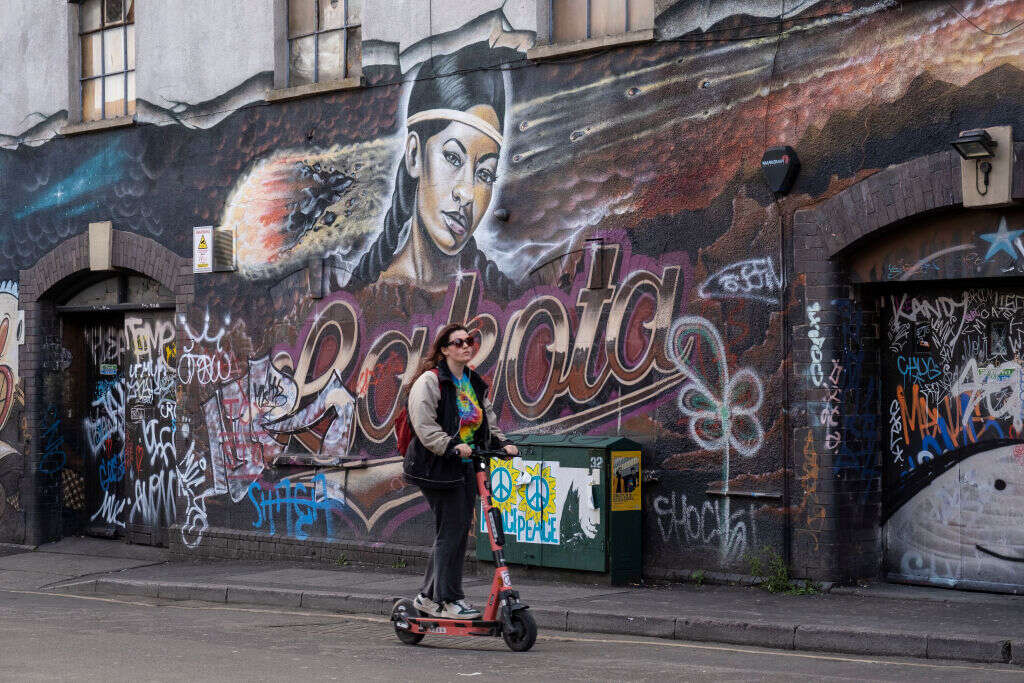
This month marks the official end of the UK’s e-scooter trial, which has been running in 31 regions across England since July 2020. While some parts of the country have dropped the trial citing safety concerns, new research from Bristol suggests that a strong infrastructure and culture for cycling can foster successful e-scooter integration.

According to e-scooter company Voi, Bristol had a higher proportion of users than any other area in which Voi operates, and a new analysis by the University of Bristol using Vivacity’s e-scooter monitors shows how Bristol has integrated the e-scooters into its public transport network.
Using sensors placed on the University of Bristol campus and surrounding main roads, the researchers found that in October 2022, e-scooters had risen to half the level of cyclists.
How many people use e-scooters in Bristol?
In early September, e-scooter usage along these routes was around 500 per day, and in October, once the term began and the students returned, daily usage often surpassed 600 per day.
The sensors show a significant dip at the weekend, suggesting e-scooters are being used for commuting to work and school. On a weekday, the most popular periods are between 7am and 10am, and between 4pm and 10pm, with strong usage in the middle of the day as well.
On weekends, the morning usage drops off, with the most popular times being in the afternoon and early evening.
Are e-scooters safer than bikes?
Perhaps surprisingly in a student location, there is very low usage of the e-scooters late at night. In fact, it seems e-scooter users may even be safer than cyclists – on weekdays, 5% of cycle journeys are between 10pm and 4am, compared with 3% of e-scooter journeys.
On weekends, late-night cycle usage rises to almost 11% of journeys, compared with 4% of e-scooter journeys taking place at that time of night.
And despite fears, Vivacity’s sensors found that on average, just 3.6% of e-scooters were going onto the pavement, compared with 5.5% of cyclists.
“This is linked to most e-scooters using the cycle lane along Park Row eastbound leading towards Bristol city centre,” explains Dr Nikolai Bode, lead researcher at the University of Bristol.
This stands in stark contrast to reports from other cities: in September, Kent County Council announced it would end its e-scooter trial early because of safety concerns, while research by surgeons in Liverpool says that the trial correlated with a “marked increase in musculoskeletal trauma” in the city.
Comprehensive research into the safety of e-scooters is difficult to find, as the government-issued data is extremely experimental, relying on collisions that have been reported to the police.
Indeed, the government data reports just 73 e-scooter collisions total (severe and small) in Liverpool in 2021, which is likely a significant under-reportage considering the surgeons’ research recorded 51 hospital admissions due to e-scooters within seven months.
The Parliamentary Advisor Council for Transport Safety (PACTS) compiled its own study, supplementing police reports with media coverage and insurance data, though it acknowledged this would still likely only show a portion of accidents. PACTS found that Bristol and Liverpool had the same number of e-scooter collisions in 2021, but in Liverpool, 46% resulted in serious injuries, compared with a quarter in Bristol.
The answer to that disparity may lie in the infrastructure and culture around cycling. A Norwegian study found that 40% of all scooter injuries involved intoxicated riders, compared with 10% for cyclists. At night, more than 90% of injured scooter users were drunk. Just 2% of injured scooter users wore a helmet when they crashed, compared with 62% of cyclists.
This suggests that a city with strong infrastructure and culture around bicycles may be able to transfer that onto their e-scooter usage, making e-scooters safer and more integrated into the city’s transport. The early data from Bristol, showing riders using scooters during the day as well as to commute to work and study, suggest the city may have achieved that goal.
Analysis by transport infrastructure company Colas ranked Bristol as the UK’s most cycle-friendly city, while Liverpool came close to the bottom of the ranking at 17. In summer 2020, Bristol City Council closed Bristol Bridge to private cars, prioritising bicycles, e-scooters and public transport in an effort to improve air quality, and in July 2021 it was announced the closure would be made permanent.
But it’s not yet fully known how much the e-scooters are contributing to more sustainable travel – whether they are reducing the number of cars on the road or just replacing walkers. The hope is that now that the official trial period has ended, a full analysis of the scheme will shed some light on e-scooters’ role in urban transport, and what regulation is needed to ensure their effective and safe use.
[Read more: What are the top cities for commuting by bike?]






